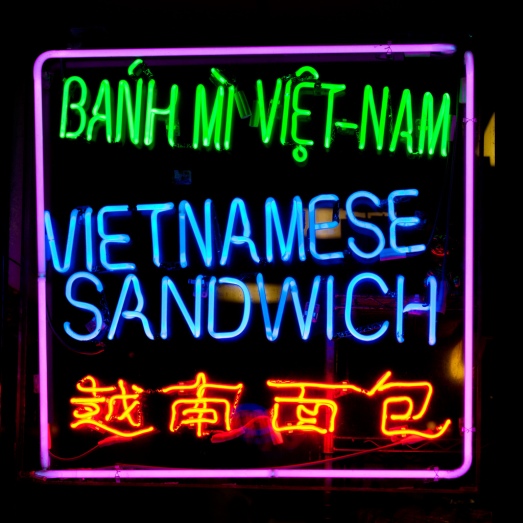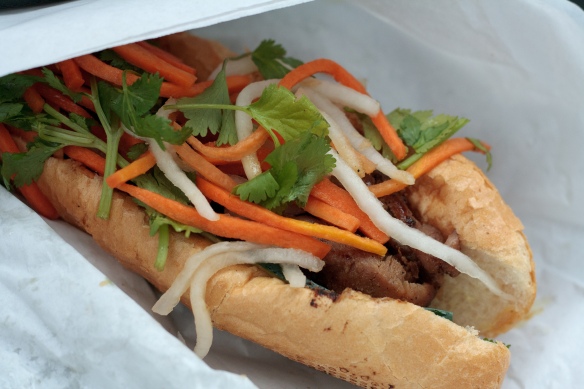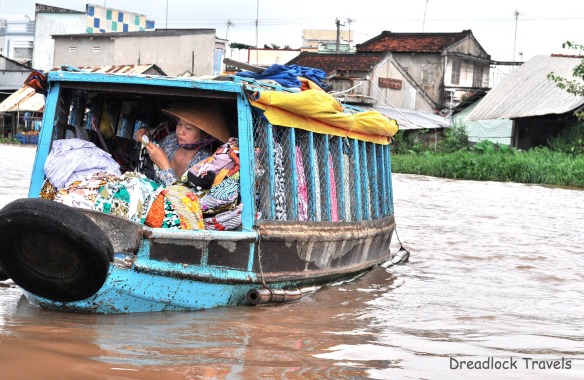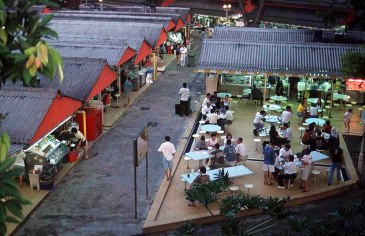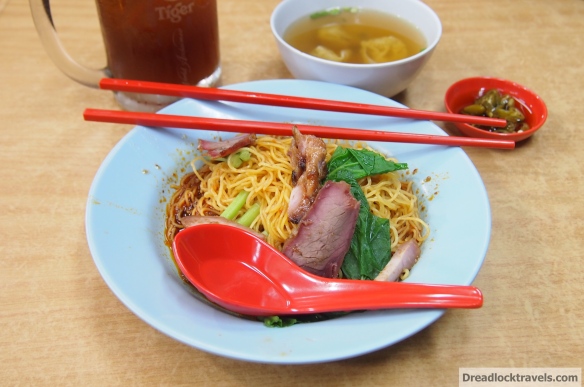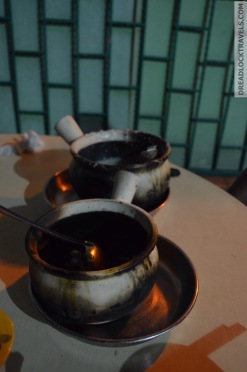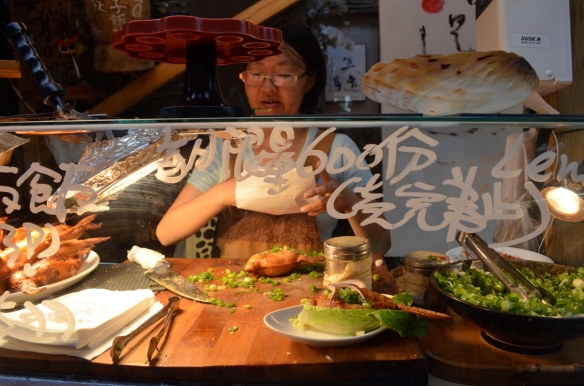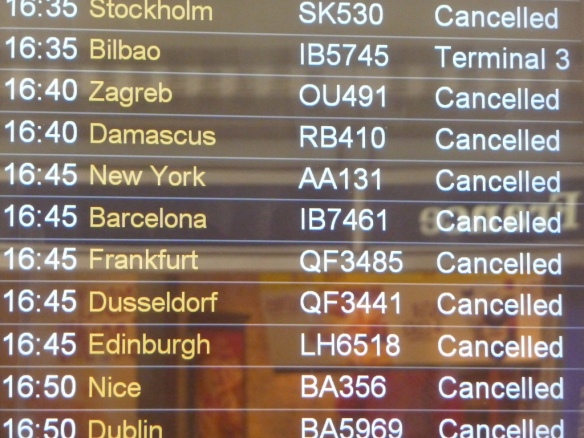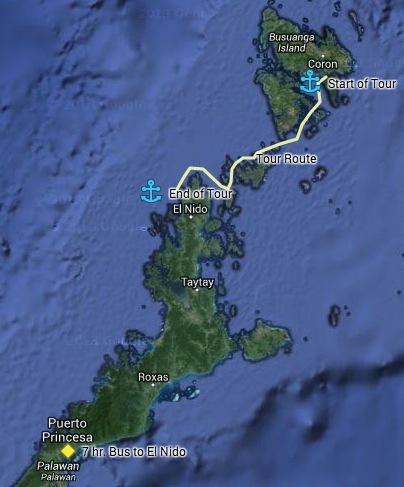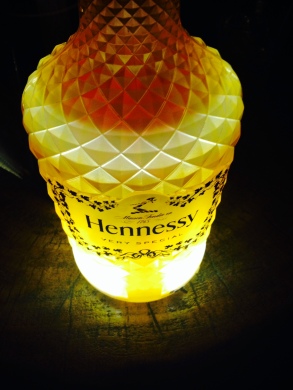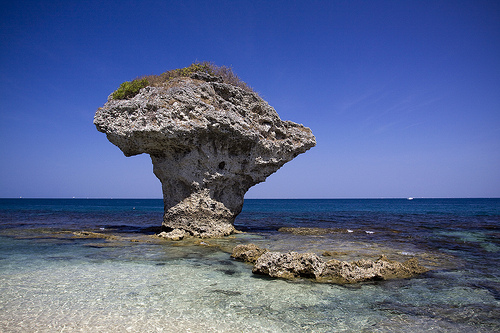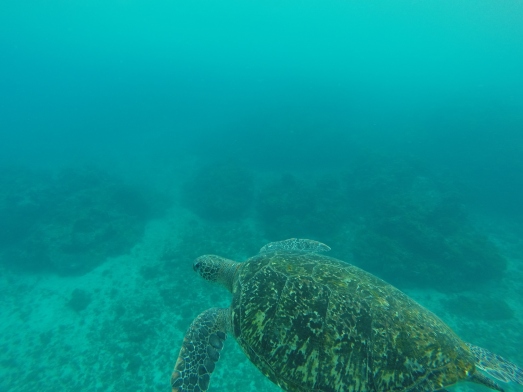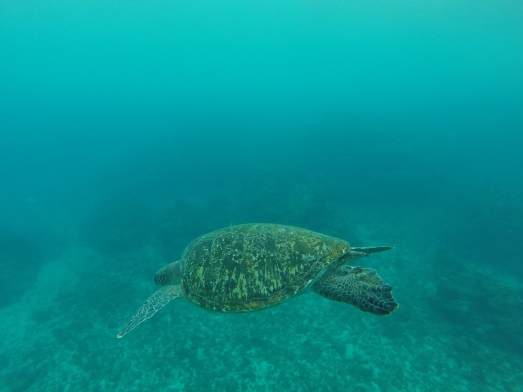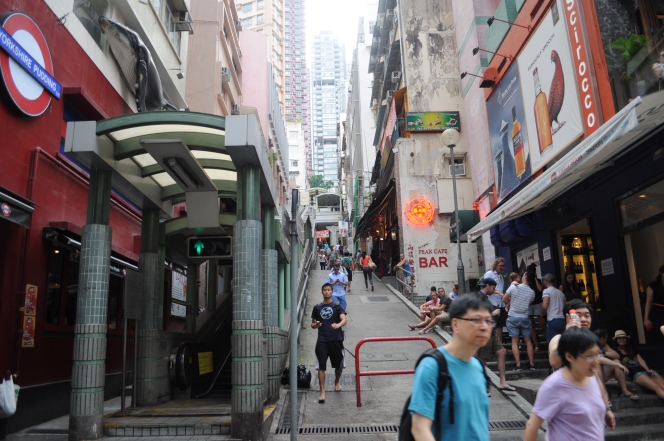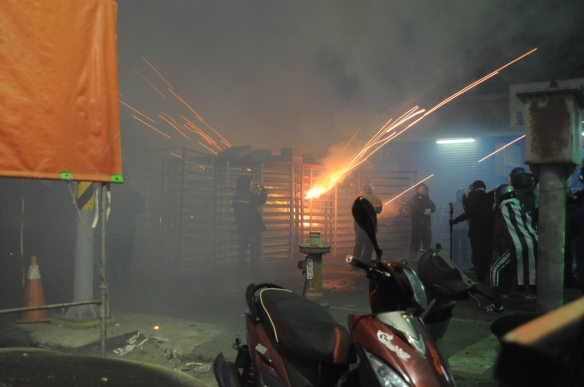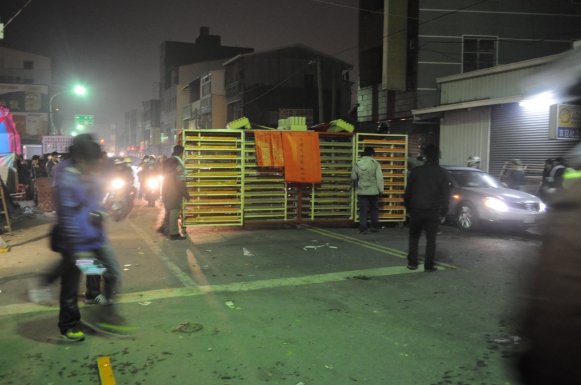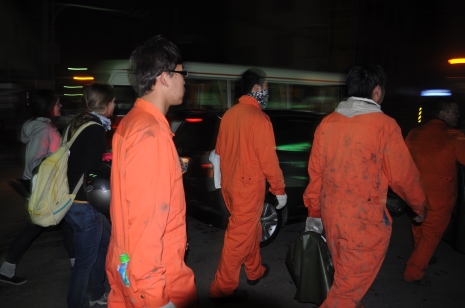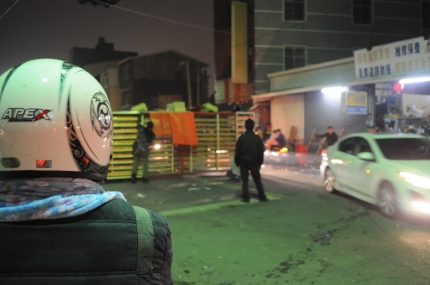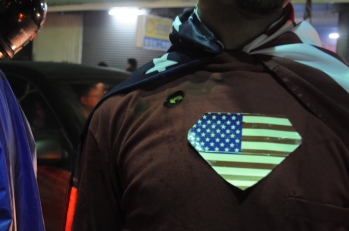I try to stick to a routine when preparing to check out from a hotel.
Zip all compartments on my pack, make sure money and documents are secure, check under the bed and flip the sheets for lost items, check the bathroom, make sure bus, plane or train tickets are accessible in my day pack.
It’s not flawless (I still managed to lose shit from time to time), but it’s helpful to at least avoid losing anything important.
I’m going through this routine at a hotel in Can Tho whilst explaining to my girlfriend how far the bus station is from our hotel. I haven’t a clue of the exact distance and she probably knows as much, but in my defense, it looks walkable on the map. Whatever the distance, I’m in no rush to hop in another taxi after battling one too many rigged taxi meters in Ho Chi Min City that jack the fare up to triple the normal rate.
“It should only take twenty minutes or so to walk to the station.”
My girlfriend isn’t convinced and she shouldn’t be. For all I know it could take an hour. Distances aren’t really my thing.
What’s of equal concern–for me, anyway– is bahn mi (pronounced bun-mee), Vietnam’s answer to the po’ boy and one of the best damn sandwiches on the planet. It’s a four hour ride from Can Tho to Ho Chi Min City and my hunger is real. I would’t mind a long hike to the bus station if there’s bahn mi to be had along the way.
Since arriving in Vietnam nearly a week ago I’d made a habit of eating several bahn mi sandwiches a day, pretty much any time we passed a vendor.
A crispy-on-the-outside-chewy-insides baguette split open and slathered with liver paté, stuffed with several cuts of pork, cilantro, cucumbers, pickled carrots, daikon, a splash of fish sauce or soy and finished off with jalapeños (if you’re lucky); it’s easily one-third of the Holy Trinity of all sandwiches (the mufaletta and classic PBJ make up the other two-thirds, respectively). I am but a man. It’s lure: too great for me to pass up.
My beef with the French is well documented, but they did Vietnam a solid by leaving behind a portion of their culinary influence in the form of a sandwich (if only it came without the heavy dose of colonialism).
I should mention this isn’t the first time I’ve been addicted to street food. When visiting a new country, I tend to gorge myself on a single item until I either get food poisoning or something more delicious takes it’s place. In Florence it was gelato, in Cuernavaca–al pastor (in all it’s delicious variations). In Indonesia I would woof down bowl after bowl of nasi campur with sambal chili sauce. That didn’t end well.
I flip the sheets in the room and check under the bed and find nothing but the TV remote. We failed to take advantage of the free cable channels, but we’ve only been in Can Tho for one night and we’re keen to make it to Mui Ne by day’s end.
While not exactly bustling, Can Tho City is the largest city in the Mekong delta and has similar vibes to that of Phnom Penh or Vientiane: rough and unattractive but generous in its chill riverside charm. Sleepy enough to stroll and explore at your own pace, but with enough to see to avoid boring you to death; a transit hub for those headed south looking to explore more of the delta and a fine place to try turtle hot pot (ban phu sa), cong cake (a fried rice flour cake with green beans and shrimp) and other delta specialties.
We came to see the floating markets. Something my girlfriend has convinced me is worth experiencing and something that I have little say in anyway because it was left to her to plan our month in Vietnam after I plotted our route through Indonesia. Not that I didn’t want to see the floating markets, but I would’ve been just as content sitting along any riverside in the Mekong Delta watching boats lug their cargo up and down the river while drinking thirty-cent beer and scarfing down bahn mi. To be fair, touring the floating markets by boat proved to be more interesting than getting drunk and eating cheap sandwiches.
Vessels of all sizes ply the river flinging merchandise from boat to boat in a style of commerce that reminds me of Seattle’s Pike Place fish market or the dough chucking chef at India’s Baskar Restaurant, only instead of fresh fish and naan dough, dragon fruit, pumpkins and lettuce are tossed through the air. Most vendors advertise their merchandise via long bamboo poles erected in the bow of ships, allowing potential customers to easily spot goods without having to maneuver closer.
We booked a boat tour of Cai Rang and Phong Dien (the two closest and most popular floating markets in Can Tho) and spent half a day weaving and bobbing between barges and row-boats packed with various wares and produce, snapping photos while our oarsman crafted jewelry and trinkets from river reeds for my girlfriend.
I have no doubt there are plenty of people that find Can Tho’s floating markets enjoyable, but the hype surrounding the necessity of seeing them is somewhat lost on me.The markets are lively and there are ample opportunities for photos, but being the focal point for many a tourists’ visit to Can Tho seems to have turned the experience into a smash-and-grab ordeal where a large majority of operators clamor to rope visitors into spending money at pre-arranged restaurants and gift shops without even completely delivering on an informative and comfortable tour of the floating markets.
Our tour included a trip to a rice paper factory and a jaunt around some of the surrounding canals but things got a little tense between us and our tour guide after we refused to buy anything more than coffee at the small restaurant we stopped at before returning to the city. Three to four hours was more than enough time to see the markets as we were able to tinker about the city on our own during the afternoon.
I give the bathroom one last check before hoisting my 65-liter pack onto my shoulders. My girlfriend has of course been ready to go for the last ten minutes. She’s not exactly impressed with my checkout routine. We return our key and thank the receptionist, who points us in the direction of the bus station. I completely forget to ask him if there’s a place to buy bahn mi along the way.
We make it a block away from the hotel when I feel sharp pressure in my stomach. I loosen the waist strap on my pack, but that’s not the cause of discomfort.
I assume it’s gas and fully expect the pressure in my stomach to produce nothing more than my usual brand of foul air. Instead what I expel is significantly more discomforting.
“I gotta go back to the hotel,” I blurt out to my girlfriend. I’m already turned around by the time I finish the sentence.
I would find out months later that my girlfriend was able to decipher the situation immediately, probably owing to the perfectly crafted I-just-shit-my-pants expression I was wearing. I Imagine it’s the same facial expression all potty-trained adults make when they inexplicably soil themselves–a mixture of confusion and horror as they come to terms with the reality of their predicament.
I briskly wobble back to the hotel and find the receptionist in the same place we left him. He pops up from behind the counter, pointing to the ceiling and nodding his head as if he knows why I’ve returned.
“Ahh, yes…,” he proclaims.
The only words I want to hear out of him is where the bathroom is.
He reaches underneath the counter and produces two small blue books.
“…your passports are here.”
Again, a look of horror and confusion.
With all my tedious checkout preparations–meticulously combing the hotel room to avoid leaving anything behind–I’d completely forgotten it was hotel policy for guests to leave their passports with the front desk during their stay.
I’m glad I’ve retrieved our passports, but there’s still the issue of the Hershey squirt that’s currently plastered in my undies.
“Uh, yeah. We…almost forgot them. Can I use your bathroom?” The urgency of my request is lost on him as he points me down the hallway.
The tendency to re-trace your steps is quite natural after experiencing an uncontrolled bowel movement. It becomes a guessing game of sorts as you try to pinpoint the cause. Questionable water? Uncooked meat? The boiled snails you precariously shared over whiskey with a group of Vietnamese construction workers?
For me there’s no question of the culprit.
I’d been completely non-discriminatory in my selection of bahn mi vendors. The sign could be on a store front or pushcart; it need only say “bahn mi.” Common sense would suggest that a sandwich composed of ingredients that have been basking in the Mekong sun for an unknown period of time is probably best avoided, but I’ve rarely let conventional wisdom dictate the food I eat, particularly when I’m hungry.
That’s not to say bahn mi is worth shitting your pants for, but I have a hard time regretting any sandwich that keeps me from accidentally ditching my passport.
If You Go…
Getting there:
From HCMC Phuong Trang and Thuang Buoi bus companies service Can Tho. The trip takes 3-4 hours which includes a pit stop for restrooms and refreshments. Tickets shouldn’t run you anymore than VND 110,000-120,000 ($5-$6)/person. Your hotel or guesthouse should be able to arrange the tickets for you, but I would recommend going to the south-east bus station (Ben Xe Mien Tay) in person to book tickets.
Floating Markets:
The most popular and convenient way to visit the floating markets is by boat tour. You’re hotel or guesthouse will most likely have a guide they recommend. This isn’t necessarily a bad option, but make sure you understand exactly what you’re paying for. If possible, take a look at the boat you’ll be riding in. Ask if the person booking the tour will actually be accompanying you on the trip.
Typically you can choose between full-day or half-day options. Half-day options will most likely take you to Cai Rong and the smaller Phong Dien with a small tour of nearby canals and a possible visit to a rice noodle factory. Full-day tours may visit several smaller floating markets and take you on a longer ride through the canals. Whichever you choose, I’d recommend getting an early start to avoid the tourist crowds. Tours can run anywhere from $15.00-$30.00 per person depending on the length of time. Cheaper rates can be had by strolling along the riverfront in the morning and haggling with boat operators.

